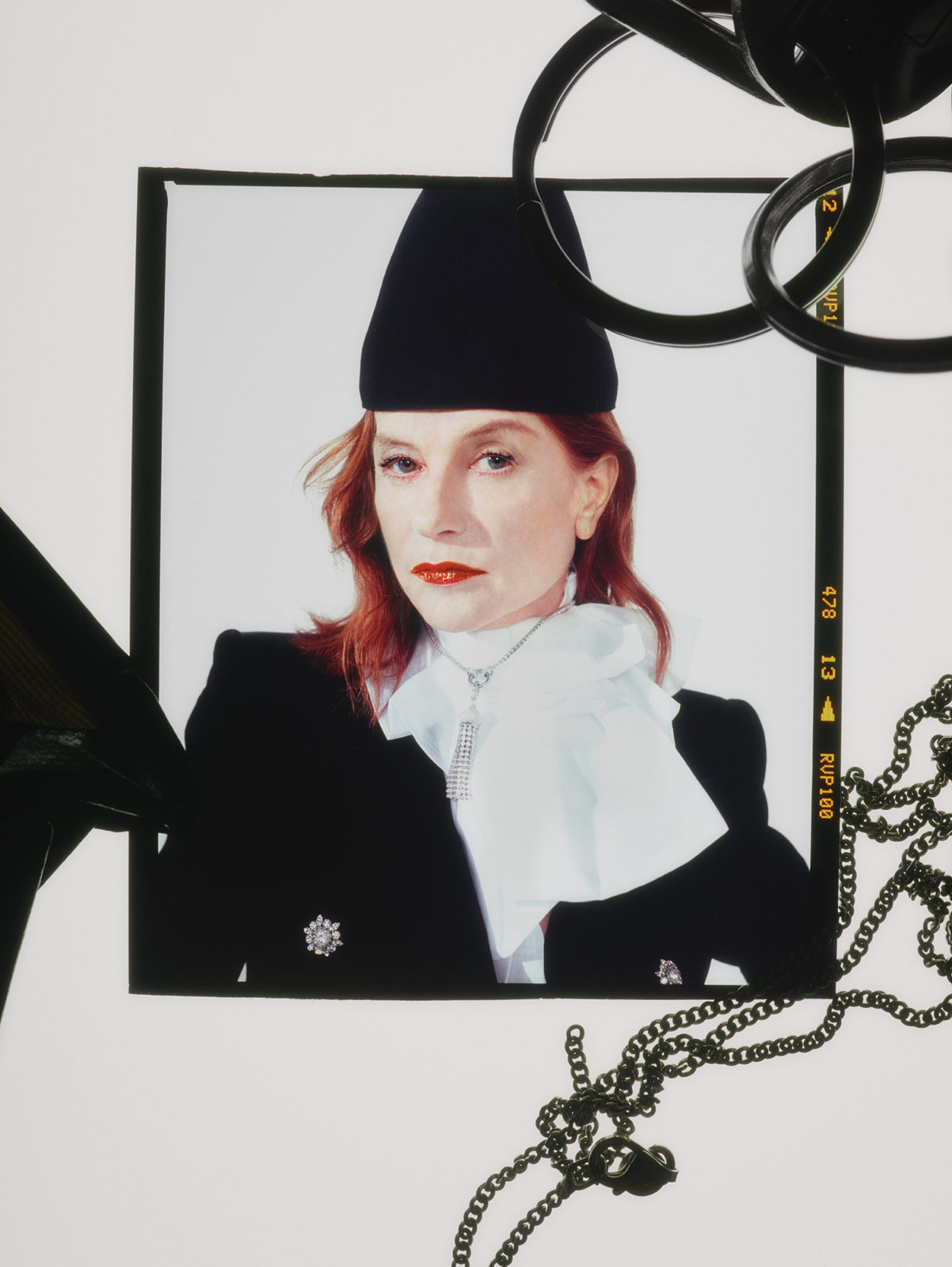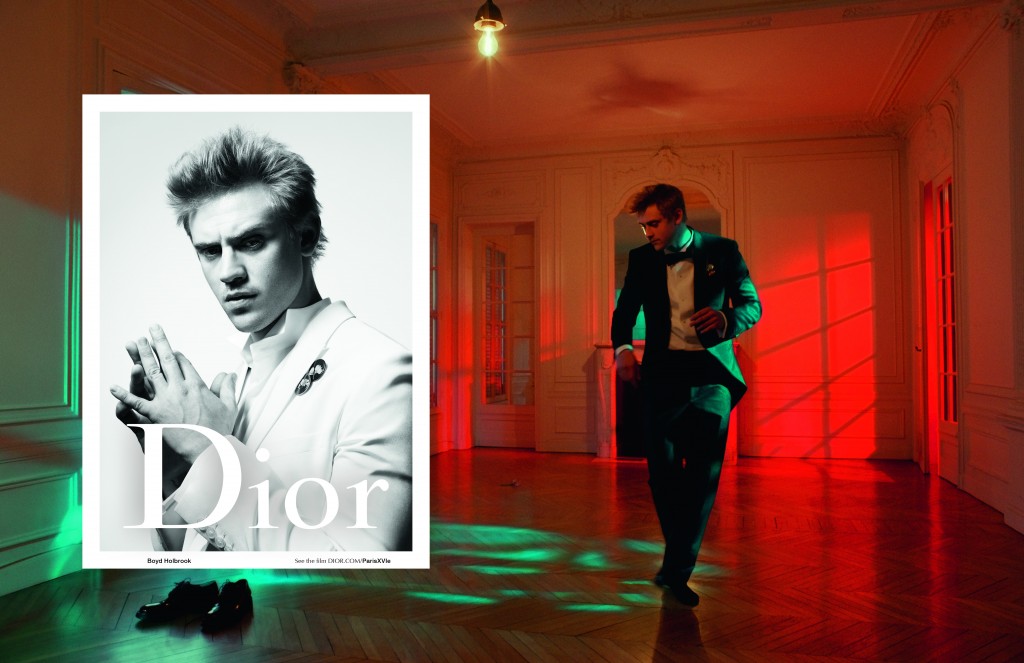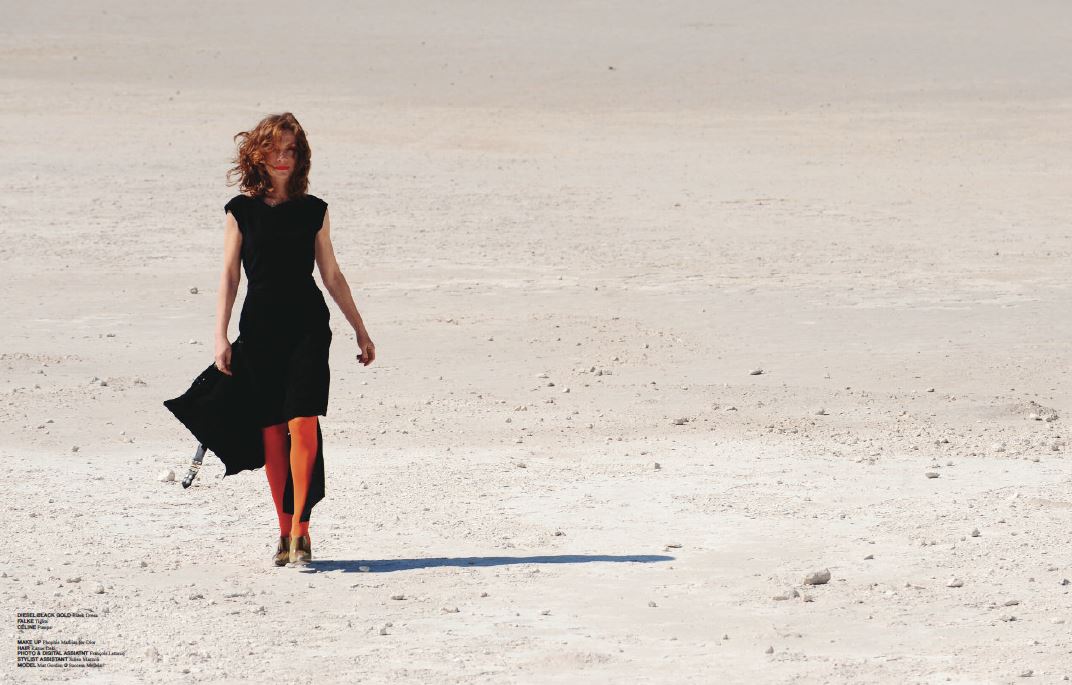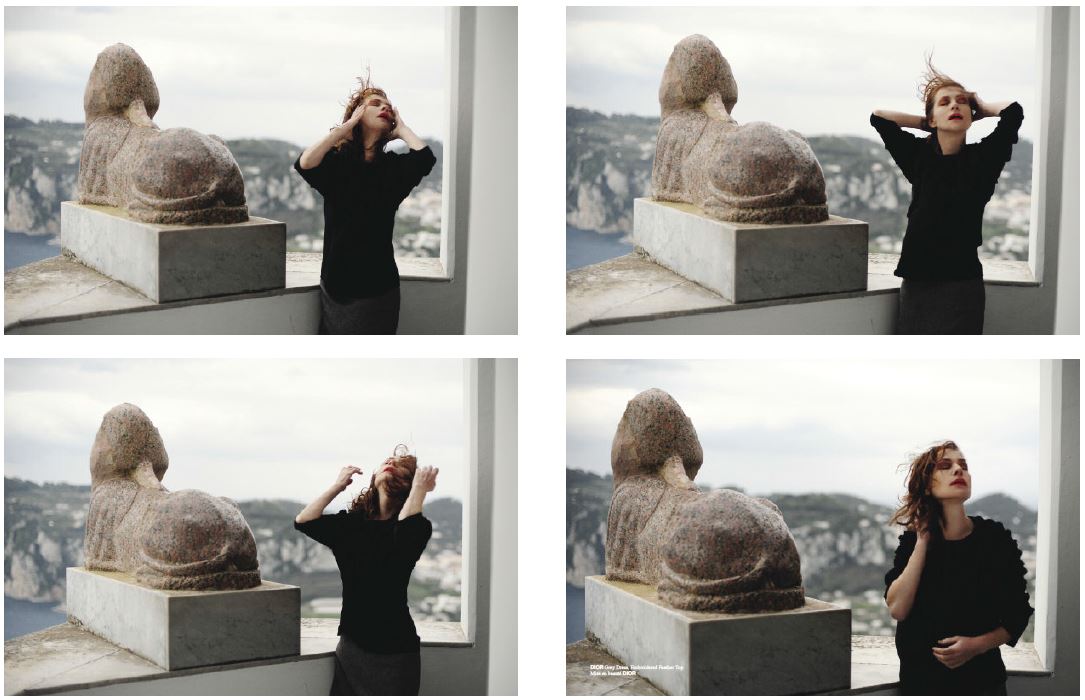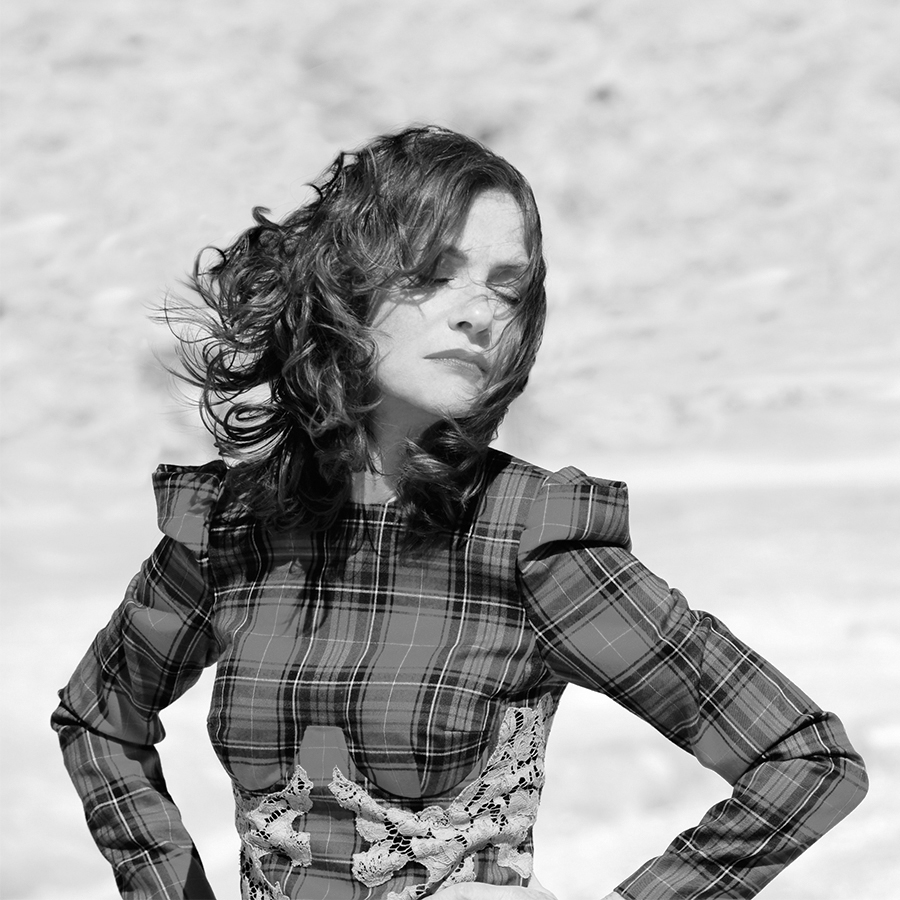
ISABELLE HUPPERT ON AMOUR
By Crash redaction
ISABELLE HUPPERT EMBODIES THE RADICAL, DEMANDING SPIRIT IN THE WORLD OF CINEMA. AN ICONIC PERSONA WITH A HIGH DEGREE OF ACTING FLEXIBILITY, SHE IS THE ESSENCE OF VISCERAL, STUNNING CINEMA. HER ON-SCREEN ROLES HAVE MADE HER ONE OF THE MOST OBSTINATE AND DARING ACTRESSES OF HER GENERATION. WITH HER PYGMALION CLAUDE CHABROL, SHE HAS WORKED ON SEVERAL MAJOR FILMS IN CINEMA HISTORY, INCLUDING MADAME BOVARY, AND LA CERÉMONIE. IN 2001, SHE RECEIVED THE PRIX D’INTERPRÉTATION FÉMININE IN CANNES FOR HER COMPLEX, POWERFUL ROLE IN MICHAEL HANEKE’S THE PIANO TEACHER. OPENED IN 2005, THE EXHIBITION “LA FEMME AUX PORTRAITS” REVEALS THE INCREDIBLE DIVERSITY OF HER ROLES THROUGH PHOTOGRAPHS BY CARTIER-BRESSON, RICHARD AVEDON, AND HELMUT NEWTON. SHE STOPPED TO TALK WITH US ABOUT ACTING, CLAUDE CHABROL, AND HER ROLE IN AMOUR, HER NEXT FILM WITH AUSTRIAN DIRECTOR M. HANEKE. ISABELLE HUPPERT WILL ALSO PLAY THE ROLE OF HANNA GIURGIU IN EVA IONESCO’S DEBUT FILM “MY LITTLE PRINCESS,” SELECTED BY THE CANNES CRITIC’S WEEK.
Interview by Théo-Mario Coppola
How do you approach your acting roles? Are you first drawn to the extreme side of your characters?
Yes, but not exclusively. What first draws me to a role is the director I’ll be working with. That’s who ultimately creates the character, even though actors do their share of the work. And it’s not just the extreme side that appeals to me; it can also be a character’s originality or fantasy. Of course a role is more interesting if it’s more complex, but you have to know how to find this complexity. It’s a combination of things: the role, the script, the director, an atmosphere. So it’s a number of factors that help me choose a role. It’s not always the role in itself, though that certainly happens. Sometimes it’s more of a surprise.
Acting often means playing a role from your own life; sometimes we notice similar personality traits between characters and the actors who portray them. do you try to distance yourself from these similarities, or do you just let things happen?
You lose something of yourself in a role. I neither try to distance myself nor let go; usually a role makes sense all of a sudden. When an actor takes a role, something akin to a chemical reaction takes place, unleashing a range of emotions that belong in part to the actor, though filtered through the character. That’s what constitutes the mystery and the beauty of the job. A role works on us as much as we work on it.
What most appeals to you in film, as an actress or a viewer?
A lot of things. I can just as easily read a fashion magazine as Balzac. The same thing goes for movies. A film can aim solely for entertainment and still be fun and interesting. I recently saw Monte Ellman’s film, road to nowhere. It opens with a very long shot of the actress, which made me think, “it’s refreshing to see shots that linger like this.” More and more, films are cut up into short shots. It’s nice to spend more time with a face and avoid so many editing cuts. Monte Ellman shoots his actors from rather close up and takes his time filming them. It’s a very pleasant technique. I’m quite fond of movies that take their time with images.
What’s left for you to do once the film has been shot?
A film’s life consists of three parts. First, it’s born in the director’s mind before being made. Once the film is finished, it’s not always what we imagined, especially in regard to your own part in it. Sometimes it’s a pleasant surprise, sometimes it’s a need of facing your frustration. Then, the third part of a film’s life is its success or failure, the variety of appreciation it receives. Ranging from love to hate, there’s a whole gamut of appreciation.
Meeting Claude Chabrol was crucial for your career in film. What memories do you have of him and the work you did together?
I have good memories of the pleasure and extreme comfort of having been able to work with the same person several times over, and to have felt loved in a very complete way. I also had the feeling that claude chabrol had found a personal medium in me. I was at total liberty to do as i pleased. I felt trusted and responsible for this trust. That was Claude Chabrol’s style: no matter the subject, no matter the style, he had a global vision of things. I can’t mention any one film in particular, as it was a habit with him. Something took place inside of me, through him. From there i was free to do what i wanted.
Did you have this ease and trust with any other directors?
It’s what I try to develop with all directors, no matter what. It’s true that Claude Chabrol made this his top priority. His films were so well-written and fluid; it made working preciously easy. His technical skill made things comfortable for actors. It was his style and power.
You worked with Michael Haneke on your next film, Amour.
It’s a film about the violence of aging, the coming of death. It’s the story of two older people, and I play their daughter: the gap widens between those approaching death and those who will go on living. It’s about a couple who shares this experience to the very end, to the point of neglecting those around them.
Michael Haneke is one of the directors who has best explored this theme of violence. He has developed many of its facets.
Of certainly not someone interested in the mild. He captures this violence in all of its dimensions, including its comic dimension. Michael Haneke is, let’s remember, an austrian filmmaker. Even in the viennese spirit of the piano teacher, he manages to keep a form of humor, though it may not be obvious at first. He never falls into pathos or sentimentalism, which makes it possible for humor to develop.
Eva Ionesco’s film, My little princess, will be presented this year in Cannes. In the film, you play the role of a mother who takes bizarre photographs of her child. This is the second time you’ve played a mother in the context of a family crisis; the first being in white material, though these two roles are very different…
Yes, very different indeed. In Claire Denis’s film, there were other themes: the frenzied attachment to land, political and social rifts. For her part, eva ionesco treats the mother/daughter relationship (and not the mother/son relationship, which is a whole different story!) Through the lens of art and recognition. What’s interesting about Eva Ionesco’s film is how she manages to explore the violence of maternal attachment while making the film feel like a tale. That’s Eva’s style. My character is something of a mix between a fairy and a witch. She brings childhood to the forefront through this atmosphere of the cruel tale. In some ways, she pays homage to her mother’s aesthetic universe, which created a powerful kind of phantasmagoria with just a costume and a few other things.
Is costume an important element for putting a role together?
It’s essential, though not all films necessarily use it. If you’re playing a supermarket cashier, it’s hard to style her like in Eva Ionesco’s film. Each role has its uniform, and that’s what first defines a character for viewers.
Is it difficult to play a part that borders on insanity?
With great ease, and very consciously, Eva avoided creating a scathing autobiographical story. She left me completely free. She never tried to get me to interpret her family history. The autobiographical side belongs only to her.
What relationship do you currently have with images?
My relationship with the camera hasn’t changed. It’s something relatively natural for a lot of people today. And i never really asked myself that question; it’s something that comes from intuition.
What is your relationship to photography?
I was attracted to it and now i take a dual interest in it, both as “seer” and as “seen.”
The exhibition la femmes aux portraits compiles a vision of you and your many sides.
The exhibition will move to korea at the end of the month. It’s a reflection on the portrait: the same person seen by over one hundred different photographers. The story is as much about photography as it is about the model. It’s an exhibition on the actress and how her face can produce fiction; the collection of portraits makes this fiction more concrete, more visible.
In photography and cinema, has this fiction brought you closer to yourself or created a certain distance from yourself?
That’s a question i don’t ask myself. I can’t conceive what i do in those terms. I think that in as much as i’m in the middle of everything, it’s necessarily more along the lines of proximity than distance. But at the same time, i’m aware that this proximity only comes through a form of crossdressing. I won’t give it any meaning, because it already has so much that i don’t need to add any.
What differences exist between theater and screen acting?
Theater is much more exhausting in terms of physical investment. It’s exulting, but i could never devote myself exclusively to theater. I do strange shows sometimes, total adventures like tramway by polish director krzysztof warlikowski or orlando with bob wilson, to name just a few…
Do you feel you have more freedom with film or theater?
You’re not constantly watched by your director in theater, which makes it seem like you’re freer; however, there’s a whole series of constraints, healthy constraints, of course. For an actor, freedom isn’t necessarily the ultimate good. Ideally you have a mix between freedom and assistance. We need it and we ask for it. With film and theater, actors must be able to be free within a given framework.
Aside from photography and film, do you appreciate any other arts?
I’m interested in a lot of things without really being a specialist in a given field. Depending on my fancy, i like to go to exhibitions, travel, meet people, even people with whom i don’t have much to say, and yet a sort of fiction develops. I appreciate anything that can produce fiction in general. I’m motivated neither by duty nor need; it’s the pleasure of discovery.
Do you seek continuity or novelty when choosing roles?
I would say continuity for the most part, even if it’s not an absolute necessity. My choices are purely intuitive. Eva ionesco offered me an unexpected chance that was unlike anything i had previously done.
Interview from Crash #56
Photography: Frank Perrin
Fashion: Armelle Leturcq
Hair: Kazue Deki
Make-up: Phophie Mathias for Dior

CHANEL Dress and jeans FALKE Tights MAISON MARTIN MARGIELA Open toes high sandals TOM FORD Sunglasses Mise en beauté DIOR
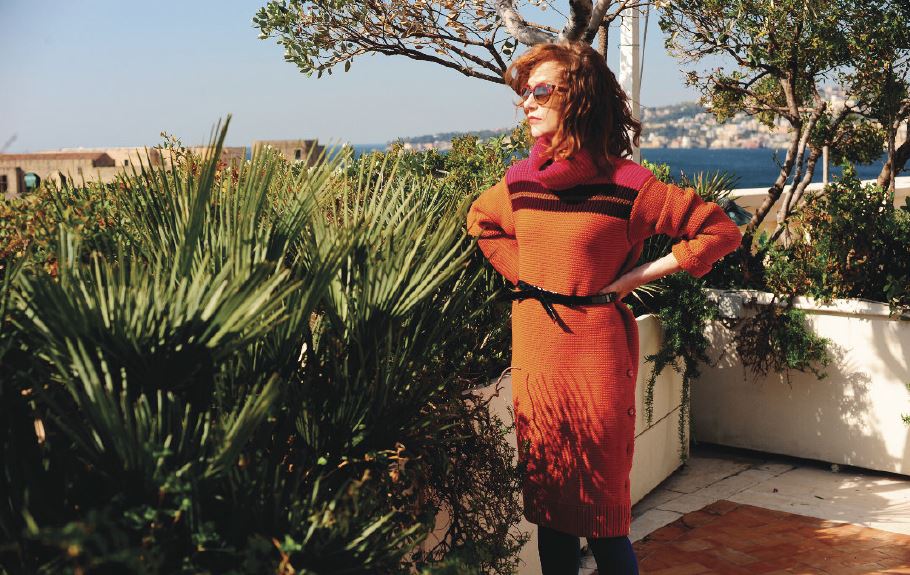
LOUIS VUITTON Pull-over Dress FALKE Tights MAISON MARTIN MARGIELA Belt JOHN GALLIANO EYEWEAR Sunglasses Mise en beauté DIOR
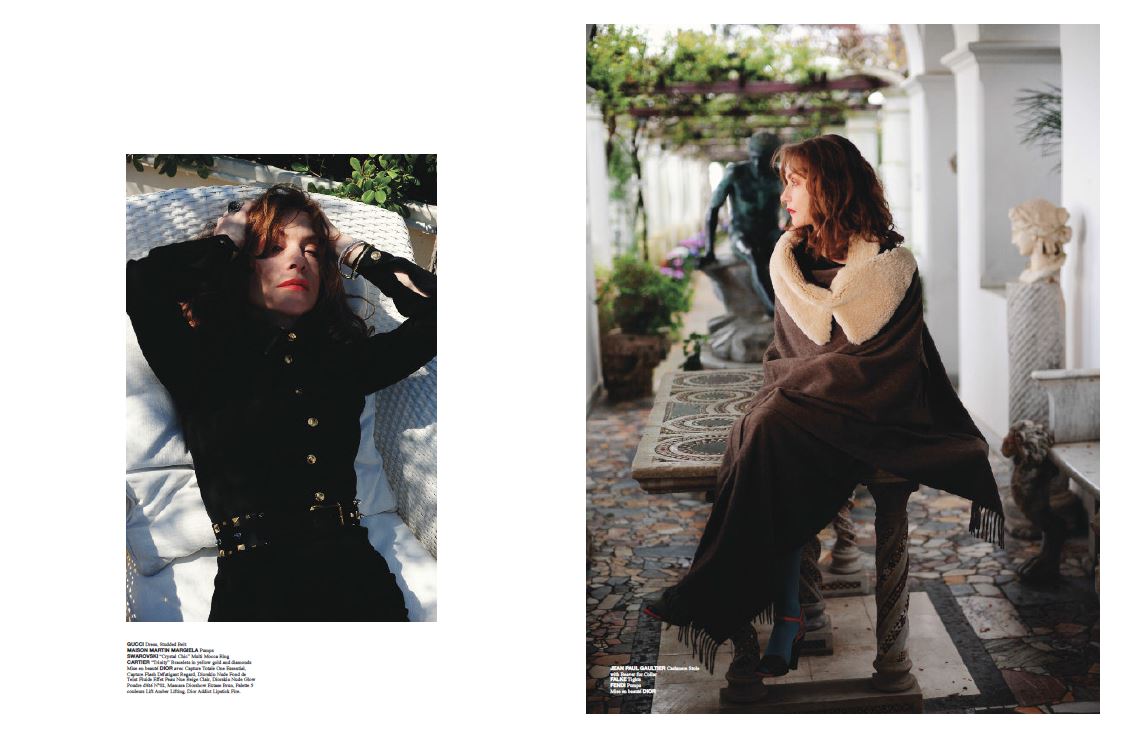
Left GUCCI Dress and studded belt MAISON MARTIN MARGIELA Pumps SWAROVSKI « Crystal chic » Multi Mocca ring CARTIER « Trinity » bracelets in yellow gold and diamonds Mise en beauté DIOR Right JEAN PAUL GAULTIER Cashmere stole with beaver fur collar FALKE Tights FENDI Pumps Mise en beauté DIOR
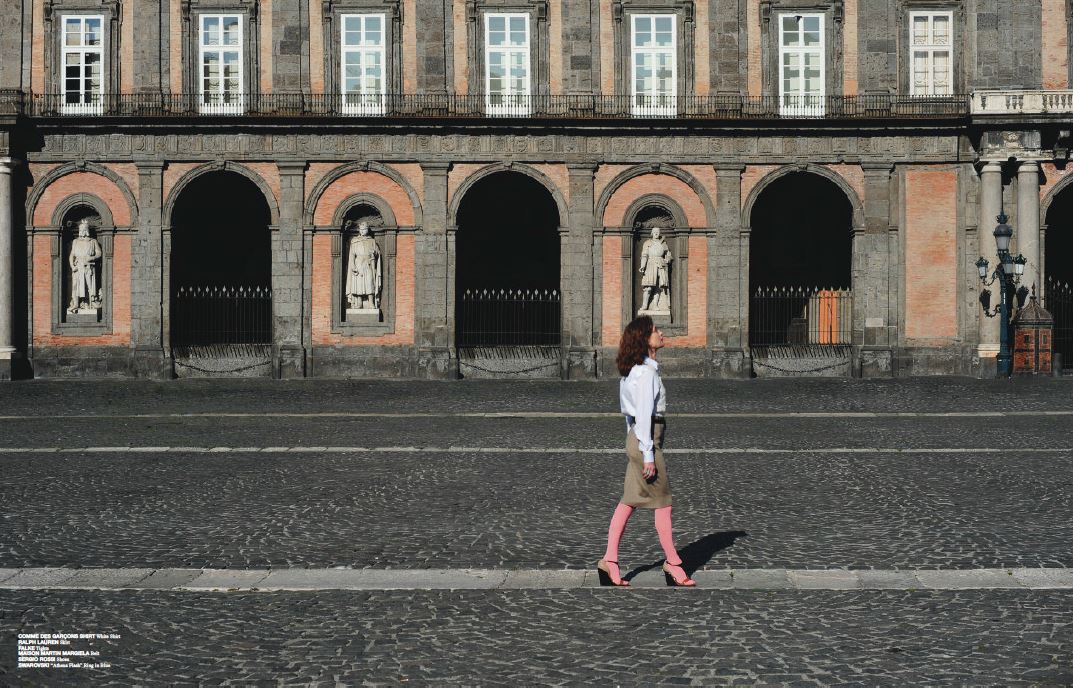
COMME DES GARÇONS SHIRT White shirt RALPH LAUREN Skirt FALKE Tights MAISON MARTIN MARGIELA Belt SERGIO ROSSI Shoes SWAROVSKI « Athena Flash » ring in blue
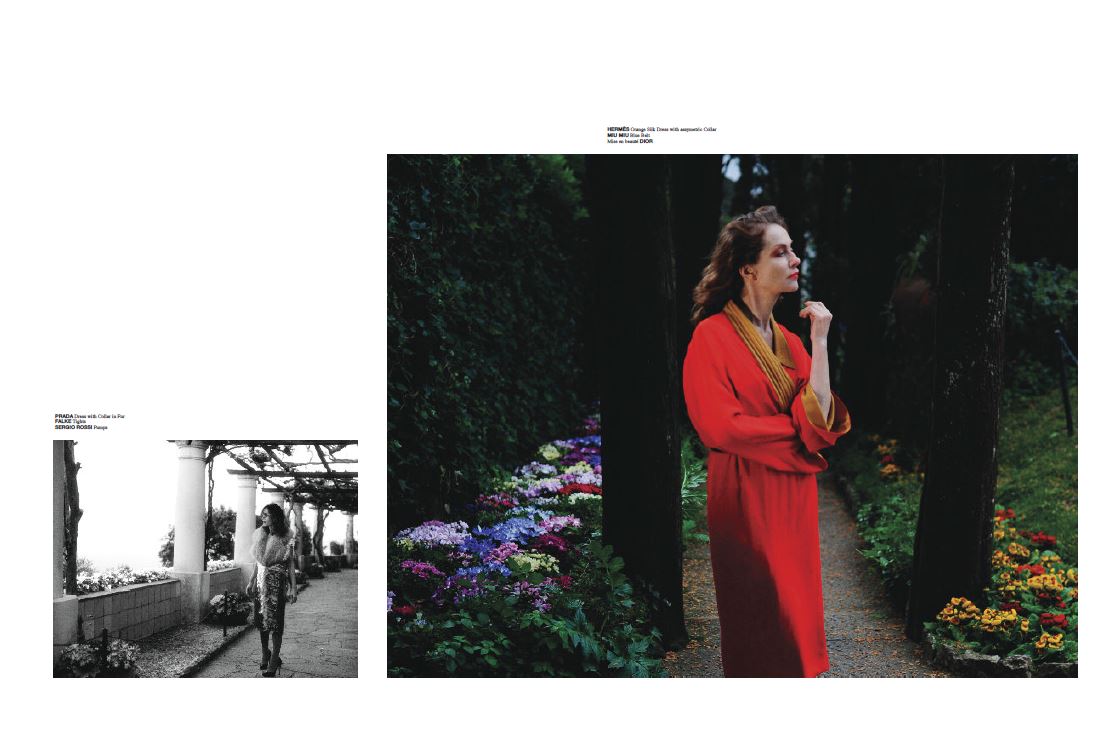
Left PRADA Dress with collar in fur FALKE Tights SERGIO ROSSI Pumps Right HERMÈS Orange Silk Dress with asymetric collar MIU MIU Blue Belt Mise en beauté DIOR
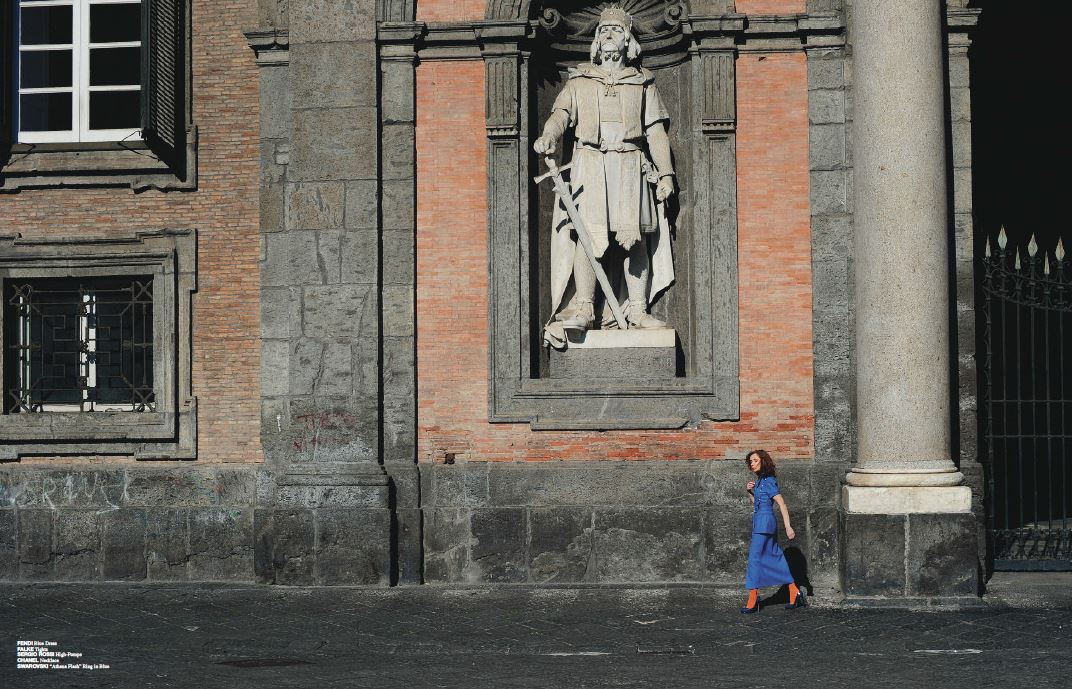
FENDI Blue Dress FALKE Tights SERGIO ROSSI High Pumps CHANEL Necklace SWAROVSKY « Athena Flash » ring in blue
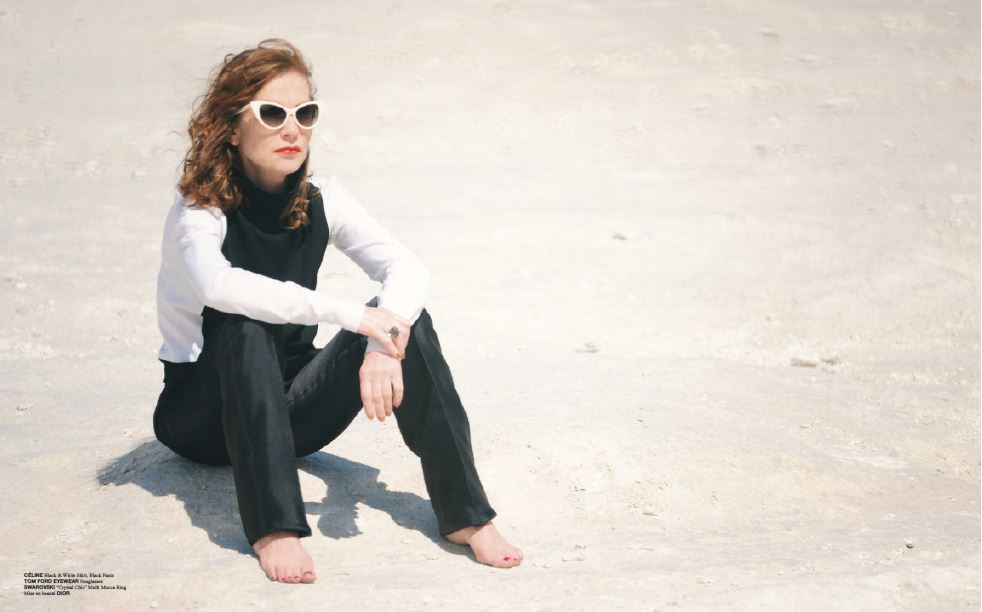
CÉLINE Back & White shirt, black pants TOM FORD EYEWEAR Sunglasses SWAROVSKI « Crystal Chic » Multi Mocca Ring Mise en beauté DIOR
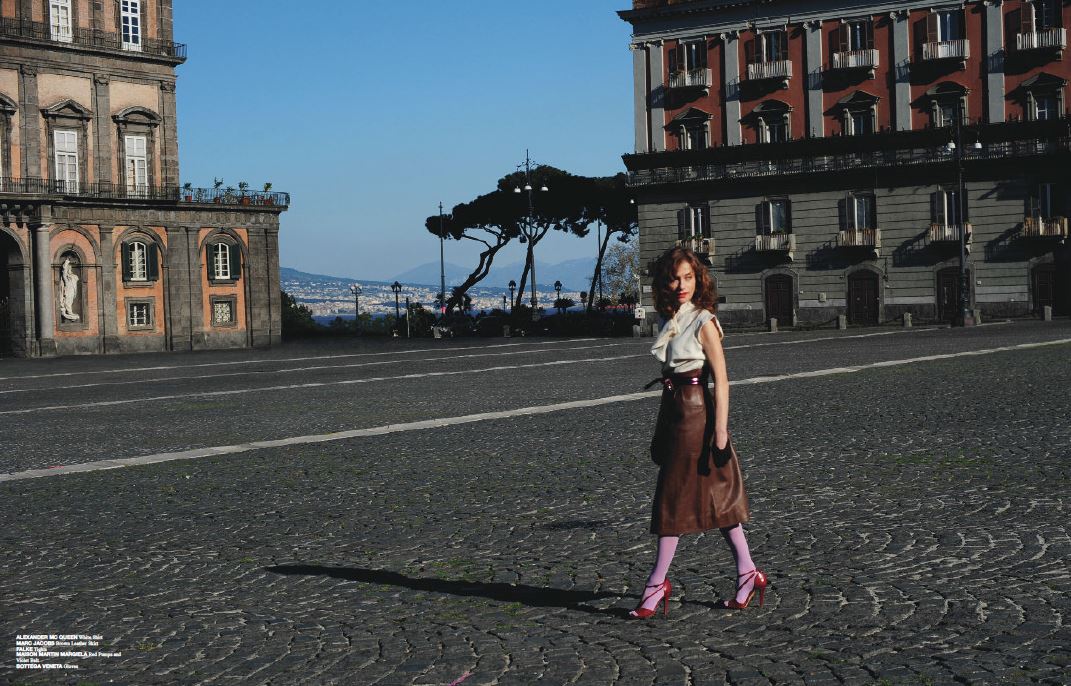
ALEXANDER MCQUEEN White shirt MARC JACOBS Brown leather skirt FALKE Tights MAISON MARTIN MARGIELA Red Pumps and Violet Belt BOTTEGA VENETA Gloves
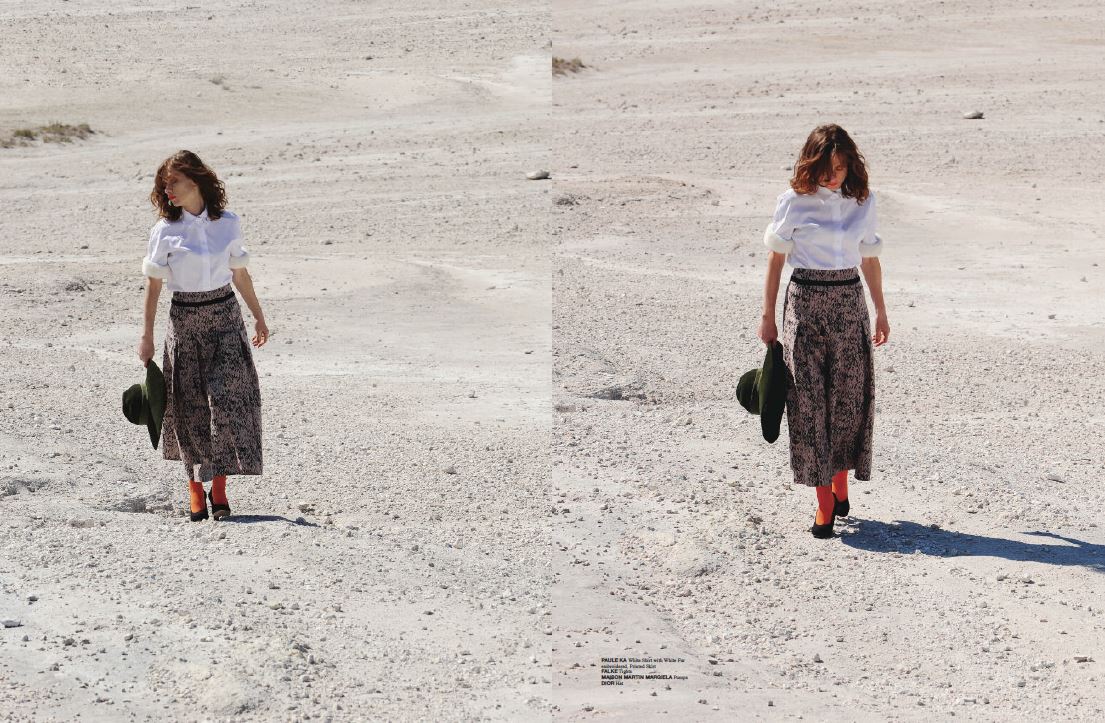
PAULE KA White shirt with white fur embroidered, printed skirt FALKE Tights MAISON MARTIN MARGIELA Pumps DIOR Hat






